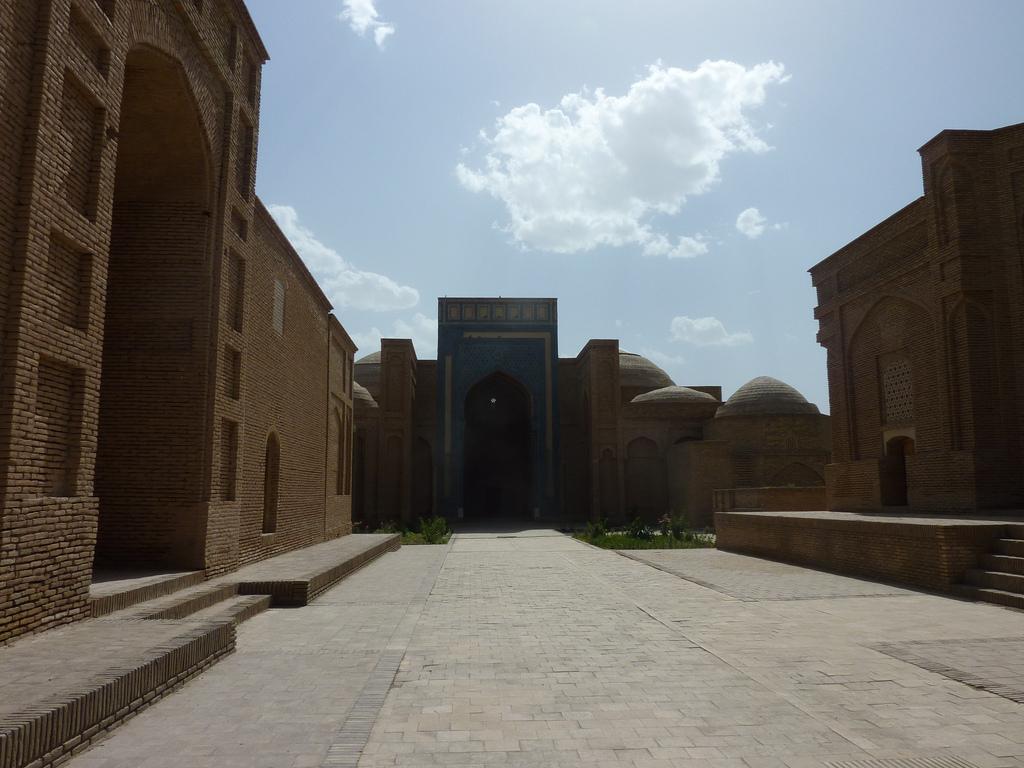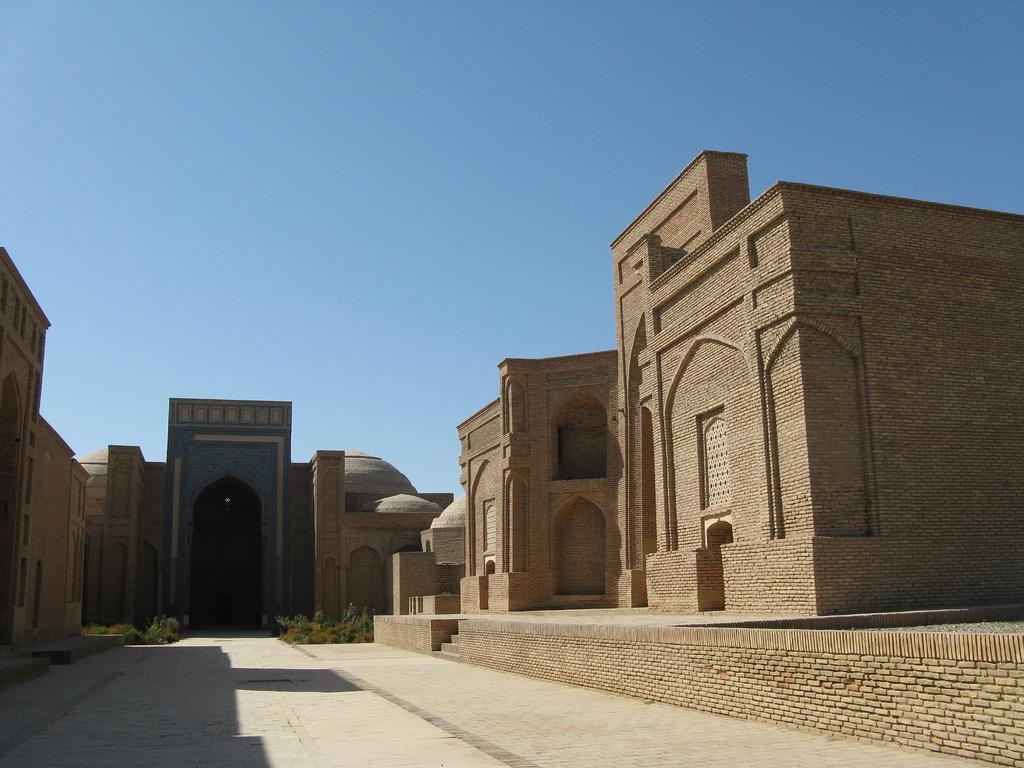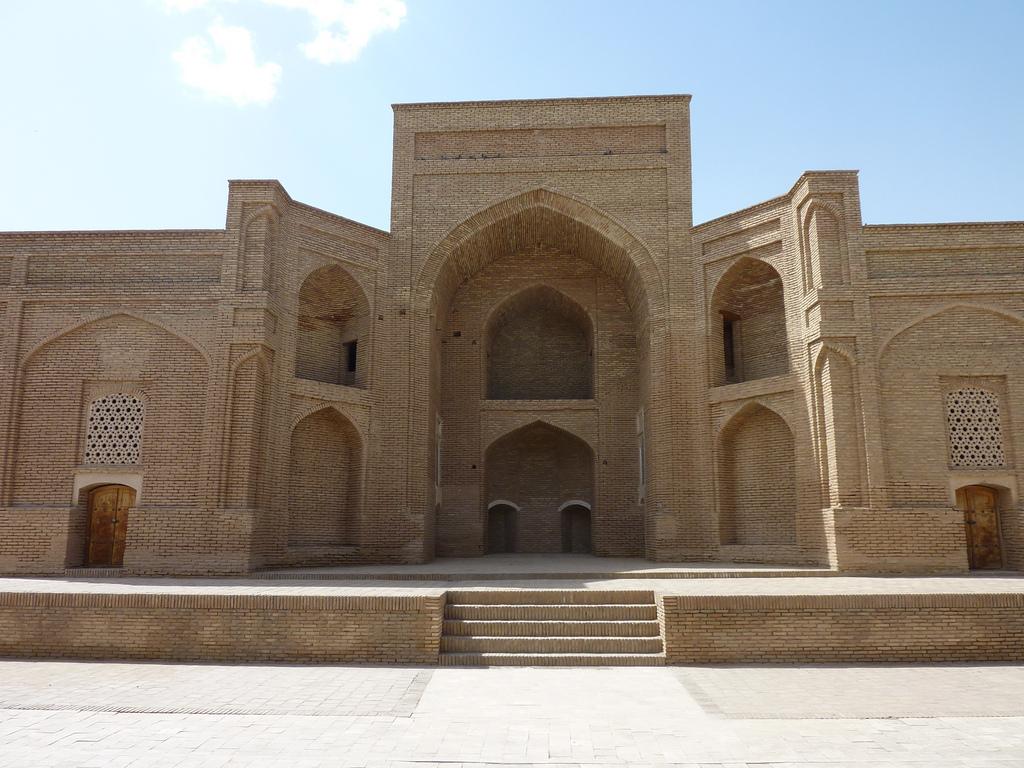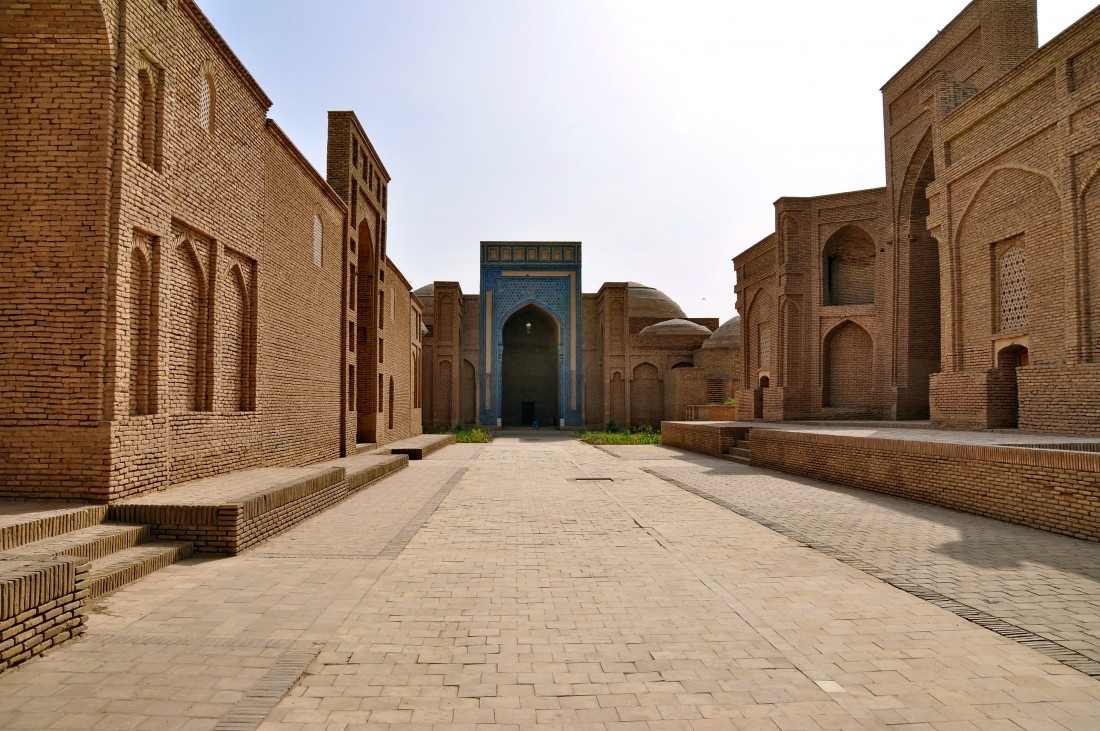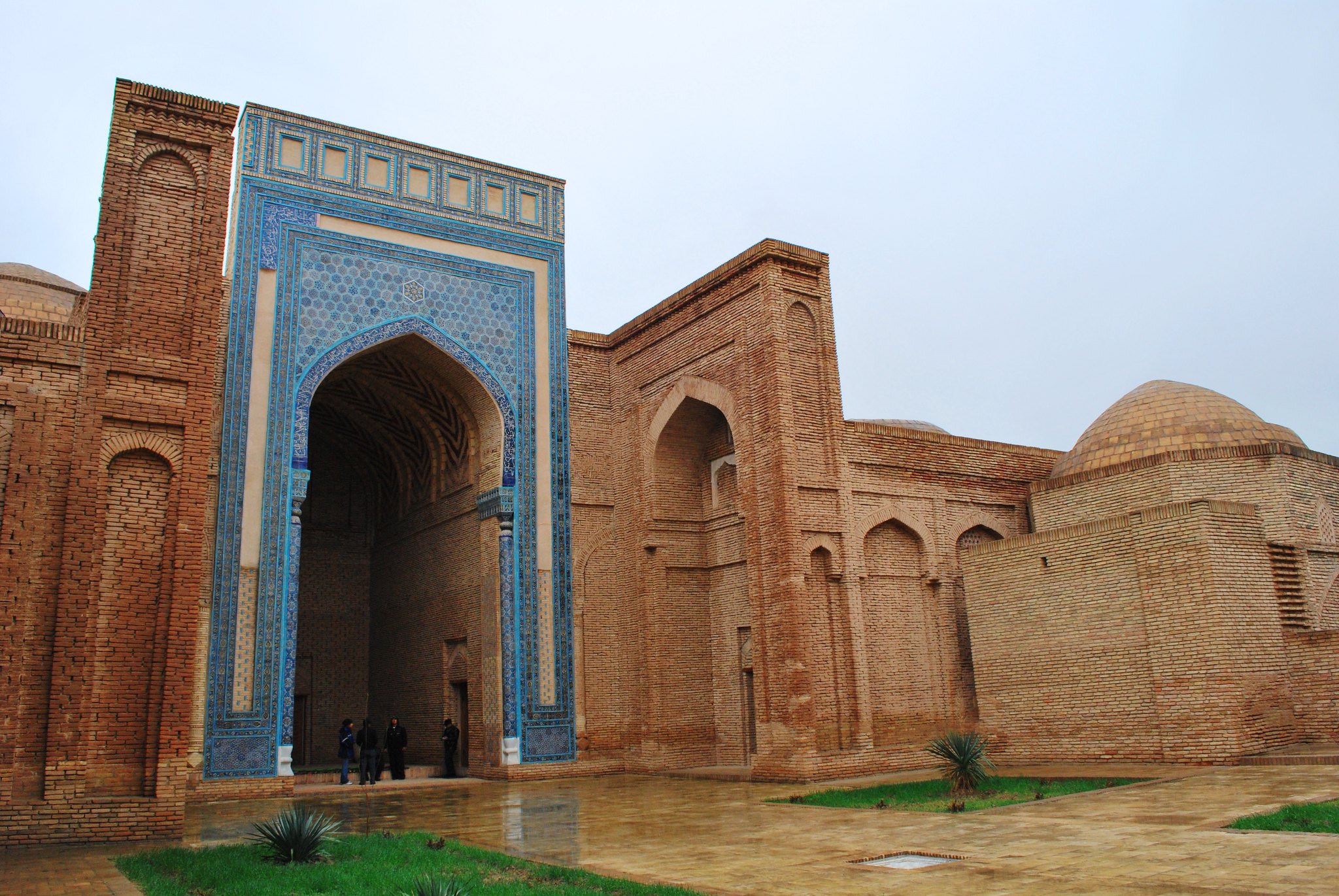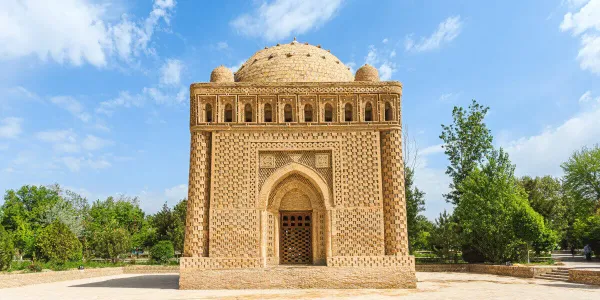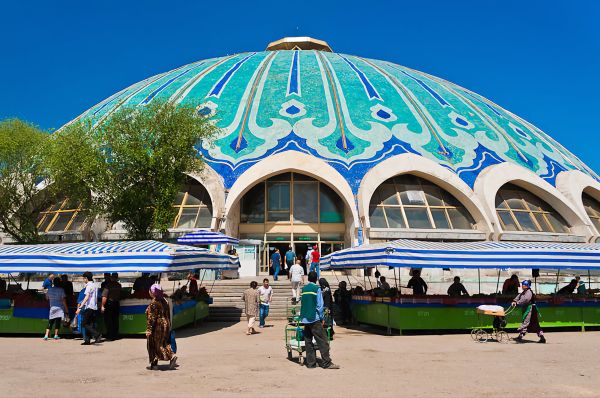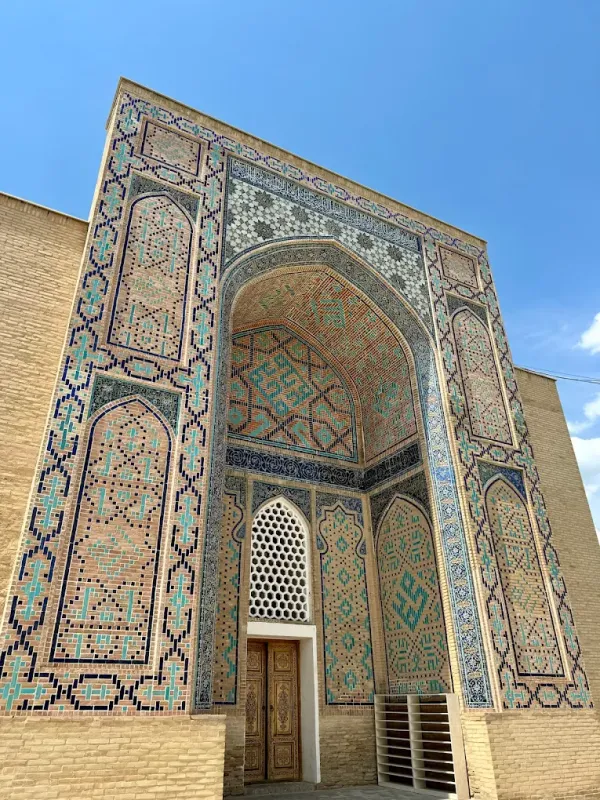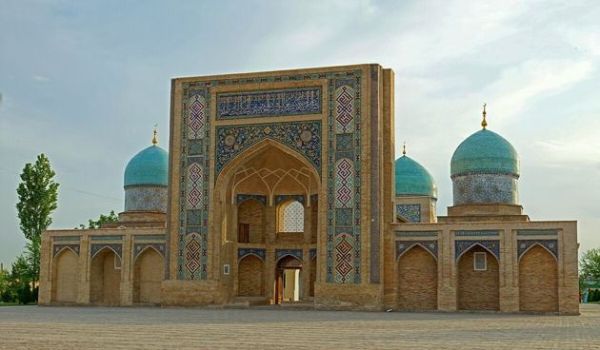Sultan Saodat Cult and Memorial Ensemble
Sultan Saodat is a cult and memorial ensemble that was built during the XII-XVII centuries. at the burials of the influential dynasty of the Termez Seyids. It consists of a number of religious buildings that were added in different eras: mausoleums, mosques and khanaks, grouped around the perimeter of a long narrow courtyard.
Its original core consists of two mausoleums united by a deep vaulted ivan, which has played the role of a memorial mosque since the 15th century. There is a mihrab in its end wall. Both mausoleums are of a centric composition, covered with spacious domes on an octagon of arches and arched sails. Researchers attribute these mausoleums to the XI-XII centuries. Due to their clear structure, decor and size, mausoleums are an excellent architectural solution.
The unity of the structure is emphasized by burnt brick, which served as both a constructive and decorative material (masonry "in the Christmas tree", ribbons of figured carved bricks, geometric and floral motifs inserts and belts of figuratively hewn bricks). Both mausoleums are crammed with tombstones, some of which still have remnants of tiled decorations. At the beginning of the 15th century, the portal was increased in height and new linings made of brightly colorful majolica tiles were applied.
In the second half of the 15th century, two new mausoleums were erected in front of both mausoleums; the buildings were layered in the 15th-17th centuries in two parallel rows. At the same time, some new mausoleums were also connected in pairs by an intermediate ivan; there is no decoration on them anymore. In the XVI-XVII centuries, the courtyard on the south and north sides was built up with mausoleums of different sizes and different eras. There was an entrance on the west side of the courtyard. The majestic ensemble stands out for its group of mausoleums, homogeneous in structure and decoration, although built in different styles.
